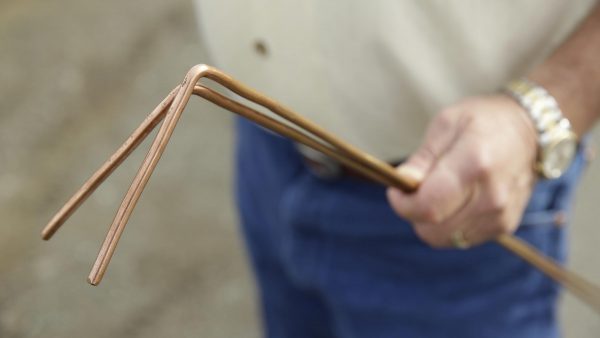First an announcement: WE HAVE A WINNER! Julie Christianson correctly guessed what movie I saw first. It was Darby O’Gill and the Little People. The banshees in the movie scared me so much that I had nightmares for weeks. Plus, I thought the Spanish moss on our oaks was Banshee hair. Creepy!
This is Part Two of our bog people interview. So many questions, so little time. To refresh your memory, for centuries, archaeologists and other scholars have been trying to unravel the mystery behind the hundreds of bodies—the oldest dating back some 10,000 years—found buried in the wetlands of Northern Europe. Due to lack of oxygen and the anti-microbial properties of peat moss, many of the “bog bodies” found in Ireland, the United Kingdom, Germany, the Netherlands and especially Denmark are startlingly well-preserved, with discernible facial features, fingerprints, hair, nails and other identifying traits. Most of them date to the Iron Age—the centuries before and after the birth of Christ—and many show signs of torture or other violence. Cremation was customary at that time, so bog burial must have been a special event. Yet Iron Age Europeans left no written records about their customs or rituals, and scholars have only been able to speculate about how and why the bog bodies ended up where they did. Michelle Gray did a wonderful job channeling for this interview. Check her out by clicking HERE.
First, check out these photos of bog people: (DO NOT LOOK IF YOU’RE EASILY GROSSED OUT!)
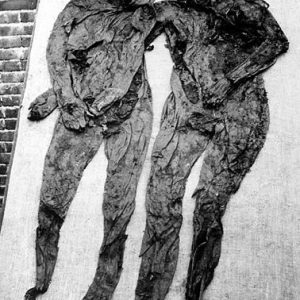
Are they holding hands?
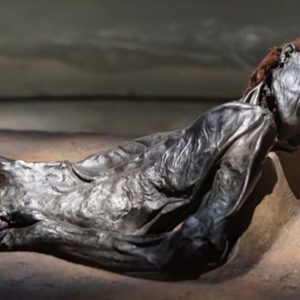
Credit: Ancient Origins
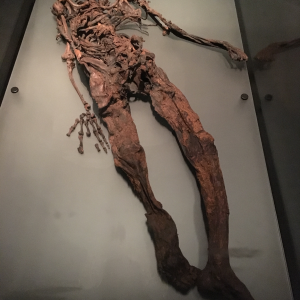
Do I see a well-preserved penis?

Credit: Brittanica.com

Tollund Man

Elling Woman: Credit Historic Mysteries
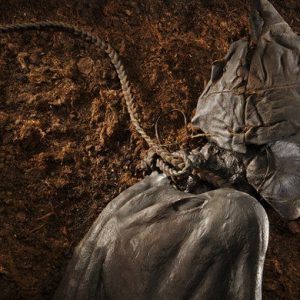
Tollund Man Was Hanged. Credit: Atlas Obscure

Credit Pinterest
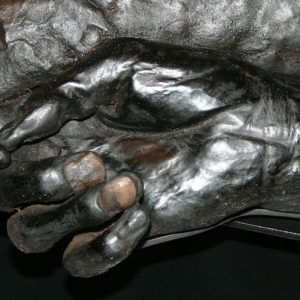
Credit: ThoughtCo

Windbey Girl Credit: Science Photo Library
Here’s an excerpt from Erik’s amazing book, My Life After Death: A Memoir from Heaven. If you haven’t read it yet, it’s available for a little over 9 bucks on Amazon. Click HERE to order your own copy and encourages family and friends to buy their own, too! It’s available in all conceivable formats: paperback, audio CD, kindle, and audiobook.
Here’s the book’s foreword (I had to copy and paste it as plain text so there’s no formatting.):
Foreword
by Elisa Medhus
Erik Rune Medhus came quietly into this world at three o’clock in the afternoon without so much as a whimper. He gazed around
the room as if in awe of this new place where he would live for all too brief a period of time. When our eyes locked, the chemistry was palpable. I knew he would be a bright light in my life.
As a child, Erik was so well behaved, often playing with his Legos quietly in his room while his siblings were running roughshod nearby. Even when he was only eighteen months old, he demonstrated a tremendous capacity for compassion. I remember the day I brought him home from the pediatrician’s office after he’d gotten a slew of childhood immunizations. His thighs were littered with Band-Aids, and his cheeks were stained with tears. My husband, Rune, asked him how his day had gone, and with his head resting on my shoulder, he said, “I have a good time.” He didn’t want us to worry about him. In fact, he frequently wanted to console us. Whenever I held and com- forted him after he got a boo-boo, he’d pat me on the shoulder as if to comfort me.
Erik grew up in a home in a Houston neighborhood with my four other children, Rune, and me, so our family was big and boisterous. There was never a dull moment in our energetic and playful house- hold. Erik, third in the pecking order, was the mischief maker among his siblings. He loved playing practical jokes on them and often teased them with a sense of impish delight. His siblings weren’t the only ones who were a target of his pranks, though. He’d often hide behind the kitchen cabinets and then jump out and yell, “Boo!” when Rune or I came home from work.
Playtime with his siblings was always creative and frequently noisy. One of his favorite games was to chase them through the house with his tighty-whities on his head while pelting them with rolled-up socks. He also loved playing war outside with his brother and sisters and some of the neighborhood kids, toting Airsoft guns around and in full camouflage clothing and face paint.
Erik had a beautiful mix of softness and toughness to him. He loved all things beautiful—especially women. He even asked his preschool teacher for her hand in marriage. He also loved anything with wheels, just like his father did. For that reason, Erik looked up to Pappa, a stockbroker by trade, and wanted so badly to be a part of his world of fast cars and faster motorcycles.
As for the two of us, our relationship was very close. In fact, we could share anything with one another, and Erik had no qualms about discussing what other children would consider inappropriate dialogue with a parent. He even asked for advice about sex. I cherished that closeness and was amazed at his candidness and trust.
Despite his happy start, Erik changed around the time he became fourteen. He suffered from severe bipolar disorder—an illness that can turn terminal. The light within him began to lose its glow as he entered his teens, and life here on Earth became extremely difficult for him.
Ours is an affectionate and caring family. Not a phone call ends or one of us leaves without an “I love you,” and there’s never a shortage of hugs to go around. As with all my kids, nearly every night after our ritual of bedtime songs and stories I would tell Erik how grateful I was to have him in my life, and I’d recount all the things I thought were special about him. Erik had his good days, but even medication, therapy, and the closeness of our family failed to coax him from that dark place he tumbled into, where misery became his near-constant companion. Because of his mental illness, his moods would frequently plummet to the deepest depths of despair. He’d sleep often in an effort to escape the pall cast over him. When he was awake, he was often sullen and quick to anger. Conflict and drama became a familiar part of our family’s life.
Erik tried to appease his demons through immediate gratification. Maybe a new hobby would bring him a brief period of joy. Maybe a new bike. Maybe a new skateboard. These things never gave him the lasting happiness he sought; instead, they only brought brief glints of sunlight before being washed away by the relentless rain of bipolar disorder. In addition, Erik suffered from learning differences and odd motor and verbal tics. Because of these, he was often the target of bul- lies—not only his peers but in some cases his teachers too.
His “friends” would let him down frequently, saying one thing yet doing another, breaking one promise after another, pretending to care and then talking about him behind his back. Sometimes they’d invite him over to “chill” but then leave before he got there. I was often the sad witness to their cruelty. I remember sitting with him outside one day, listening as he called his friends one by one only to have them pick up the phone and then hang up.
In spite of how he was treated, Erik never hurled a personal insult at anyone. Sure, he got angry or disappointed, but he never tried to tear a person down by calling them names. And though his gift for com- passion often went unrecognized, it never faded. He was always there for a distressed friend in need. He made himself completely available, saying things like, “I’m here for you. Do you want me to come over and sit with you?” And I’m sure that when he did sit with that friend, he listened well.
Strangers seemed to gravitate toward Erik. I don’t know why. Maybe they, too, sensed the good in him like we all did. People used to approach him at our local Starbucks, where he liked to hang out and bum cigarettes, and they’d share their stories with Erik as he listened patiently and lovingly. When one of these newfound lost souls started to cry, as they often did, he would wrap him or her in a warm embrace and say, “Look, dude, you’re coming home with me. My mom’s going to make you a home-cooked meal.” I made many unplanned trips to the market, but it was always worth it.
Erik was also very open and candid. His conversations were peppered with his usual sailor talk and honesty—a sincerity that made him easily approachable. To him, words were just a string of letters; they get their power from the intent behind them, and his intent was always pure and positive.
As a mother, watching his suffering was agonizing. It seemed like nothing I did helped, and I tried everything. I mean everything. Noth- ing done or said could soothe his pain. All I could do was watch from the sidelines, my broken heart in my hands, witnessing his illness slowly sap the life from him.
Just after his twentieth birthday, Erik died from a self-inflicted gun- shot wound to the head.
This book is the memoir of my son Erik, who in his own words shares his journey into the afterlife from the moment of his untimely death to the present, giving a glimpse of what’s to come for all of us. Knowing he “survived” his death and now thrives in a new dimension gives all of us, at the very least, pause and, at the very most, comfort, enlightenment, and inspiration.
As painful as it was to witness and as painful as it still sometimes is for me to relive some of these experiences, they have also been an opportunity for immense healing and growth. I’m very proud of what
Erik’s doing in his role as a spirit guide, giving so much to so many people throughout the world, often saving lives not only figuratively but literally too. I had to dig deep to find the courage and strength to continue after Erik’s passing, but I know now that although it comes at a heavy price, I was meant to share my son with the world.
Erik communicates with me largely through spirit translators. With their help, Erik has shared all he knows about death, the afterlife, his life as a spirit, and more. All this is recounted in my first book, My Son and the Afterlife: Conversations from the Other Side, which also chronicles my arduous journey from a skeptical physician who was raised by two atheists to a believer without so much as a shred of doubt.
This book is more about his journey than mine. Through the translation of gifted spirit translator Jamie Butler, Erik tells his story of life after death in a way that heals on many fronts. For instance, it is truly amazing to watch Erik heal himself through his own words as he processes and shares his experiences on each page. He has evolved and grown up as he’s found his footing in his new home and discovered his own worth in a way that he never could when he was “alive.”
Erik’s words have also healed my entire family. We now know he’s not gone forever but lives on with a renewed sense of joy and purpose. We see that he’s no longer miserable like he was here on Earth. And because of him, spirituality has become an integral part of our family’s life and beliefs. We now realize that the soul survives death and that we are eternal beings here to grow and expand from our human experience.
It is Erik’s hope that his words will help demystify death by helping us shed some of the fear and dread surrounding it that so many of us experience. By shining a bright flashlight into that dark and mysterious forest of the unknown, he brings to anyone who will eventually die— that is to say, everyone—both insight and comfort, along with the will to live life as it’s meant to be lived: out from underneath the shroud of our own mortality.
Through Erik’s words, love, and joy, our relationship has changed. It’s better. Richer. Deeper. We “talk” more than we ever have before, but our conversations don’t just revolve around his misery. They take a larger stage, delving into topics that are meant not only to change my life and my family’s but of people across the globe as well. Although our loving relationship has reached new heights, I know that it will continue to grow and strengthen even more, because love knows no boundaries—even death.
Erik, Mama loves you forever.
Have a wonderful weekend, and thanks again to those of you who have helped me out with donations!
Featured image courtesy of ThoughtCo.
Important links:
Blog: https://channelingerik.com
Watch our Tuesday night Radio show: http://www.blogtalkradio.com/hour-of-enlightenment
PLEASE click LIKE on our Facebook page: https://www.facebook.com/ChannelingErik
PLEASE follow me on Instagram: https://www.instagram.com/channeling_erik
PLEASE subscribe to my YouTube channel: https://www.youtube.com/c/ChannelingErik2121
PLEASE follow me on Twitter: https://twitter.com/CHANNELINGERIK
Check out my new YouTube channel (Two and a Half Dogs): https://www.youtube.com/channel/UCYJ2NDvcf9IG3eMu7KyXIdQ



